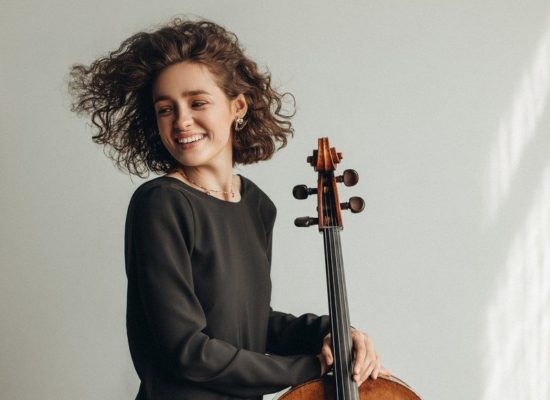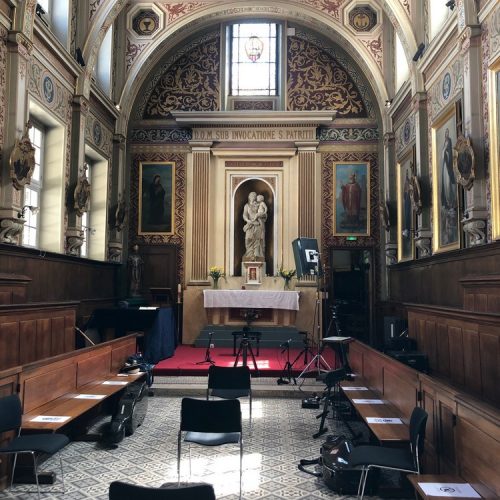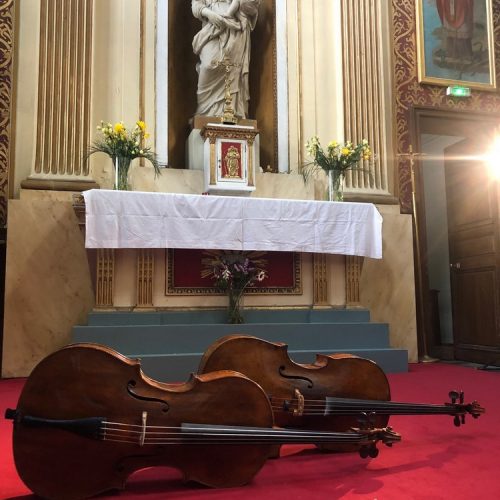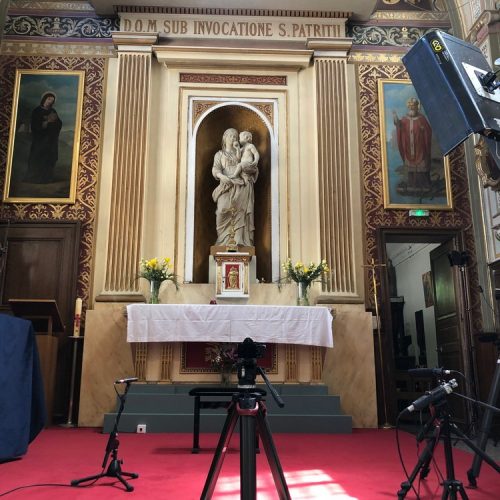Friday 3 July 2020
7:00 pm

This specially filmed concert will become available to view here at 7pm on Friday 3rd July 2020. The link will be shared on our social media, or you can check-in to this event page to watch it here.
If the concert is not immediately visible at that time, please refresh this page.
If you would like to make a donation towards the cost of these performances, please click on the Donate button below. All donations will go directly to the musicians.
For this concert we return to the wonderful St Patrick’s Chapel at the Irish Cultural Centre in Paris, where the young Russian cellist, Anastasia Kobekina, plays two of Johann Sebastian Bach’s major key Cello Suites and a short piece by her father, Vladimir Kobekin. Anastasia plays the Third Suite on a Baroque cello and the Sixth Suite (originally composed for the five-string Viola Pomposa) on a modern cello.
The Third Suite positively rejoices in the extrovert and confident key of C major. Openness, riches, magnanimity are on offer here, presented in a generous and open-hearted embrace. The Allemande is stately and elegant followed by a Courante so full of energy that it scarcely draws breath. In Bach’s hands the Sarabande takes on a formal, almost ritual character full of grave beauty. The Bourrées offer a divertissement after the serious demeanour of the Sarabande, plain-spoken but humorous. The Gigue is a celebration of the dance, where the dance floor can scarcely contain the overflowing spirits.
The opening of the Sixth Suite is like a blaze of light, gloria in excelsis Deo sung with all five voices in sublime celebration, the single instrument somehow sounds like an entire orchestra exploding with acclamation. The Allemande is completely unlike the other five, played molto adagio and its character could be compared to that of the Allemande of Bach’s Violin Partita in B Minor in its prayer like contemplation of impossible beauty.
The Italian style Courante returns to a world of heady virtuosity, where the basic metre of the dance is made even more hectic by the whirling sixteenths. The Sarabande is most loyal to the characteristics of the Sarabande – a work with no emotion to express other than grandeur and awesome beauty; a brief taste, in what we arrogantly call real time, of the infinite. The ensuing Gavottes almost take the listener by surprise as they are transported away from a brief glimpse of another universe by the first Gavotte – a dance of forceful buoyancy followed by a wonderfully rustic second Gavotte challenging its performer but bringing the listener the utmost of delight. The final Gigue is one of the longer movements of the Cello Suites, almost as though the composer could not bear to drag himself away from the creation of this masterpiece. It is a final release of all tension, rustic in character yet virtuosic in its use of double-stops, an extended range and challenging melodic patterns. The frenzy of the dance culminates in a burst of repeated sixteenth note pairs in a wild farewell to the glorious domain of the Cello Suite.
We’re grateful to Anastasia Kobekina for sending us these images, taken at the Centre Culturel Irlandais while recording this concert for our Festival. Perhaps you can imagine sitting in this atmospheric hall, waiting for the concert to start …
 ©Anastasia Kobekina
©Anastasia Kobekina ©Anastasia Kobekina
©Anastasia Kobekina ©Anastasia Kobekina
©Anastasia Kobekina
| Composer | Work |
|---|---|
| J.S. Bach | Cello Suite No.3 in C major |
| J.S. Bach | Cello Suite No.6 in D major |
| Vladimir Kobekin | Narrenschiff (Ship of Fools) for solo cello |
Copyright © 2025 West Cork Music. All rights reserved.
Designed and developed by Matrix Internet